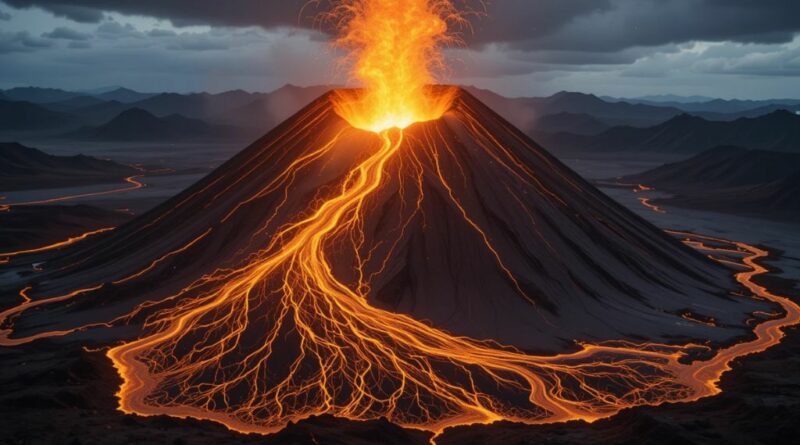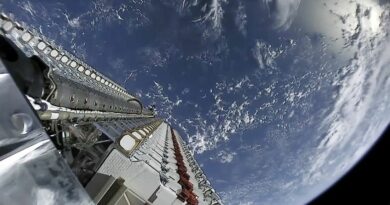How the Earth’s Core Spews Lava and Gold
Beneath the turquoise waters surrounding Hawaii’s volcanic islands lies one of geology’s most extraordinary revelations. Scientists have discovered that precious metals—including gold, platinum, and ruthenium—are slowly seeping upward from Earth’s molten core, challenging everything we thought we knew about our planet’s internal architecture.
This groundbreaking discovery, published in Nature by researchers from the University of Göttingen, suggests that the boundary between Earth’s core and mantle isn’t the impermeable barrier previously imagined. Instead, it appears to function as a geological conduit, allowing trace amounts of precious metals to migrate thousands of kilometres upward through mantle plumes—vertical streams of superheated rock that fuel volcanic activity.
A Planetary Treasure Vault
The numbers are staggering. More than 99.999 percent of Earth’s total reserves of gold and other precious metals lie within our planet’s metallic core—buried approximately 2,900 kilometres beneath our feet. This represents a treasure trove that dwarfs all human gold reserves combined, estimated at around 200,000 tonnes. If accessible, the core’s gold reserves could theoretically supply humanity’s needs for millions of years.
The discovery emerged from an unlikely source: volcanic rocks collected from Hawaiian lava flows. When Dr Nils Messling and his team at Göttingen’s Department of Geochemistry analysed these samples using cutting-edge isotope detection techniques, they found something extraordinary. The rocks contained unusually high concentrations of ruthenium-100, a rare isotope that predominantly exists in Earth’s core rather than its rocky mantle.
The Isotopic Fingerprint
The ruthenium isotope signature in rocks from hotspot volcanoes like the ones in Hawaii is entirely different from any other rock or meteorite on record, according to lead researcher Messling. This distinctive isotopic fingerprint serves as geological evidence that material from the core-mantle boundary—located more than 1,800 miles below the surface—has somehow made its way to Hawaiian volcanoes.
The implications extend far beyond ruthenium alone. The new ruthenium isotope data provides the first definitive proof that siderophile (iron-loving) elements like gold, platinum, palladium, and rhodium also follow this pathway via mantle plumes. These elements, which have a natural affinity for iron, were primarily sequestered in Earth’s metallic core during the planet’s formation 4.5 billion years ago.
Rewriting Planetary Dynamics
The discovery fundamentally challenges our understanding of Earth’s internal structure. Previously, scientists believed the core-mantle boundary represented an essentially sealed system, with minimal exchange of materials between these distinct layers. The study confirms that the mantle plumes — rising jets of molten rock coming from the core-mantle boundary that create hot spots like Hawaii — are far more dynamic than previously understood.
Professor Matthias Willbold, co-author of the study, explains the significance: the research demonstrates that enormous volumes of superheated mantle material—potentially hundreds of quadrillion tonnes of rock—originate at the core-mantle boundary and rise to Earth’s surface. This process has been occurring for geological timescales, gradually enriching certain regions with trace amounts of precious metals.
The Hawaiian Connection
Hawaii’s unique geological position makes it an ideal location for detecting this phenomenon. The island chain sits atop one of Earth’s most prominent mantle plumes, a column of hot rock that rises from the core-mantle boundary like a slow-motion fountain. As this material ascends through the mantle over millions of years, it carries with it minute quantities of core-derived metals.
The volcanic activity that created the Hawaiian Islands represents the surface expression of this deep-Earth process. Each eruption brings to the surface rock that began its journey nearly 3,000 kilometres below, carrying with it the chemical signatures of its epic journey through the planet’s interior.
Technological Breakthrough
The discovery was only possible thanks to advances in analytical chemistry. The differences in ruthenium isotopes are so minuscule that they were previously undetectable. The Göttingen team developed new procedures that could resolve these tiny variations, opening a window into processes occurring at the most extreme depths of our planet.
“Our data confirmed that material from the core, including gold and other precious metals, is leaking into the Earth’s mantle above,” Messling reported. This confirmation represents a technological as well as scientific breakthrough, demonstrating how improved analytical techniques can reveal previously hidden aspects of planetary science.
Global Implications
The research has profound implications for our understanding of metal distributions on Earth’s surface. Some scientists suspect that rock plumes carrying metals might have spurred geochemical differences in the oceans and atmosphere over long periods, potentially influencing the development of ore deposits and even biological systems.
This discovery also provides new context for understanding why certain regions are particularly rich in precious metals. Areas with histories of mantle plume activity may have received systematic enrichment over geological time, creating the concentrated ore deposits that humans have mined for millennia.
Looking Forward
The research opens entirely new avenues for planetary science. If similar processes occur on other rocky planets, it could help explain metal distributions throughout the solar system. The discovery also raises questions about the long-term evolution of Earth’s core and mantle, suggesting these systems are far more interactive than previously believed.
For the immediate future, this research won’t lead to new gold rushes or dramatically alter precious metal markets. The quantities involved are minute, and the metals remain dispersed throughout vast volumes of rock. However, the discovery provides crucial insights into the fundamental processes that shape our planet.
As Dr Messling noted, whether these processes operated similarly in Earth’s past remains to be proven. The research opens an entirely new perspective on the evolution of our planet’s internal dynamics, suggesting that the boundary between Earth’s layers is far more permeable than anyone previously imagined.
The Hawaiian islands, already renowned for their natural beauty and geological significance, now hold an additional claim to fame: they represent one of the few places on Earth’s surface where we can directly observe the deep secrets of our planet’s molten heart. In their volcanic rocks lies evidence of a golden pipeline stretching from the Earth’s core to its surface—a testament to the dynamic, interconnected nature of our remarkable planet.
We’d like to hear your questions or comments on today’s topic!
For more articles like this one, click here.
Thought for the day:
“I have always believed, and I still believe, that whatever good or bad fortune may come our way we can always give it meaning and transform it into something of value.” Hermann Hesse



